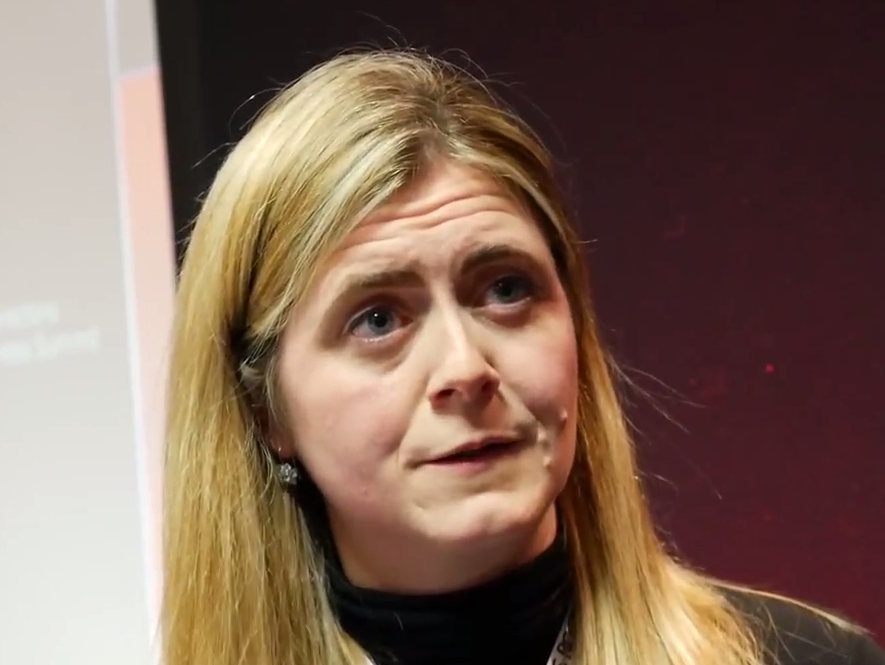How Pizza Hut combined HR and marketing to produce market leading results
- 8 Min Read
Overhauling a major high street brand is a mammoth process. Pizza Hut took on this project by combining its HR and marketing department to invest in its people.
- Author: Owain Thomas
- Date published: Apr 13, 2016
- Categories

Overhauling a major high street brand is a mammoth process. Pizza Hut took on this project by combining its HR and marketing department to invest in its people.
“People are our brand” is the mantra of Pizza Hut HR and marketing director Kathryn Austin.
“Because of that it makes absolute sense to bring the two functions together and to cross-fertilise some of the great thinking and capability in those two different functions,” she told HRD Connect.
The move to combine the HR and marketing functions under one roof was probably the most radical undertaken by the restaurant chain as part of a nationwide revamp.
But the strategy has been driven by a return to its origins on the outside and a significant investment in its people on the inside.
Speaking exclusively to HRD Connect, Austin said: “We very deliberately wanted to bring marketing and HR together. If you’re an experience-led business like ours then your people really are your product.
“Basically your people are your brand, they are your brand ambassadors. From the minute that a guest walks through the door to the minute that they leave, their perception of our business and the fun that they have and the likelihood to revisit is entirely determined by the experience and interaction with the teams.”
Tasty results
The Pizza Hut revolution has been a thorough and extensive one with massive investment made in the infrastructure and more importantly, the people.
And the results appear to be proving Austin’s faith in the process.
Commercially, Pizza Hut outperformed the casual dining market for 46 of 52 weeks last year, with restaurants a year after their refurbishment delivering 10% growth on top of that gained following the renovation.
This is entirely through people capability and something that excited Austin because it could be so clearly measured.
The rewards also arrived in the form of peer recognition, with Austin and her team claiming two HR Distinction Awards this year – for Distinction in Employee Engagement and Distinction in Change Management.
How and why Shell recalibrated its leadership development
Team building
At the focus of the growth is developing people.
Stage one involves preparing colleagues at each location for the journey ahead, bringing them together as teams.
“This is about what they can do as a team to trust each other, build their leadership amongst the team, build their own personal ability to be agile and to deal with change and to be ready for the refurbishment that’s coming their way,” Austin told the HR Directors Business Summit.
“The restaurant general manager gets to do the business case on why their hut can make the money back from their investment – so from day one the restaurateurs own it, which I think is very powerful from their point of view,” she added.
But this does not mean HR teams are left out. They still play a key role in the evolution of the business.
As Austin explained, the central HR function is absolutely critical in this process.
“We assess people capability and if we don’t feel that hut’s structure and capability is ready they will not progress through to stage two, which is the refurbishment.
“That’s really important because we’ve had a couple of examples where the builders have been ready to go in but we’ve turned them away and said the people aren’t ready. That’s quite a big thing for an organisation going through a major change process to say ‘Stop, we’re not ready,’” she continued.
Watch HRD Connect’s interview with Pizza Hut’s Kathryn Austin
Laying the foundations
This personnel preparation is vital because eventually the teams will be given greater autonomy and independence to control their marketing and make decisions based on their local geography and market.
Previously all decisions were made from the head office which left restaurant managers little space to cater for their particular clientele.
But being able to stop along the way means restaurants can progress at their own speed and ensure they are ready to maximise the investment
Why is this so important? Sales after the restaurant refurbishment typically spike by 150% and managers and their staff need to be able to handle that demand and manage that growth.
“Suddenly they have to let go, they have to trust the system and be ready to take all those extra sales and maximise them,” added Austin.
Roughly a year later, when the buzz from the revamp has died down, restaurants are then moved along to the next stage which involves an intense training process with staff being coached by area managers.
“They are given freedom within a framework to drive the growth of their business. Previously we were trying to control everything. To have a team with the power to act for themselves and make decisions within a framework really does drive growth explained,” she said.
Giving managers power
Speaking to HRD Connect after her presentation, Austin explained more about the roots of the decision.
“The legacy of our business is that we came from being a major global brand and managing on a global scale, and the challenge with that is that your consumer is very local to the geography in which they live.
“So if you’re managing in Dallas you can’t very well tell what the weather is like in Hull or Truro and so we have to have dynamic commercial thinkers running our huts who can respond to things out of their control like the weather or things within their control that they can plan and forecast for.
“So we really need our local teams in every one of our 300 huts to have a degree of freedom and empowerment to do the things and invest in the things that they think will drive and grow their business. And because they own it, they believe it and they plan it, it happens,” she added.
Why building a solid corporate culture should be a HR priority
Why HR and marketing?
It is once restaurants have gone through this third stage that the ideology and practicality behind combining the HR and marketing functions comes alive.
Instead of spending on generic in-store adverts and marketing material, budget can instead be used to help train managers and staff or allow managers to more accurately target their customers.
And it has helped in telling the stories behind the people who work for Pizza Hut, internally and externally.
“Public relations reports into a head of HR, which enables us to get a balance of thinking across the two functions which are usually quite distinct,” Austin told the Summit.
“In previous roles I’ve had trouble getting marketing teams to be interested in the people stories that we’ve got, or to get interest internally or externally about some of the things we’re doing. Put the two together and suddenly the balance of messaging starts to change,” she added.
Testing and analysing
Organising such a wide-ranging overhaul is not easy but it has been helped by using pioneering restaurants to test ideas.
As teams progress through the stages, the central HR team is able to experiment with new ideas and practices, applying them to the most advanced restaurants as part of a testing lab.
Those that succeed are then rolled-out to restaurants further down the ladder as they progress, and those which do not work are dropped without affecting other parts of the business.
All this requires a significant application of data and analytics to choose the correct methods.
“We do use data and we have taken quite a scientific approach to our transformation and the reason for that is to build confidence,” Austin told HRD Connect.
“If you segment up some of the things you’re trying to do and then measure it and get the results from it in fairly small groups then its relatively low risk. So you can fail and you can pick yourself up and try something different and you can amend and carry on.
“So yes we have tried to measure and prove success as we’ve gone through our journey,” she concluded.
Download the full interview with Kathryn Austin where she explains more about combining HR and marketing teams
Sign up for the 2016 European HR Directors Summit and the 2017 HR Directors Summit is open now.










